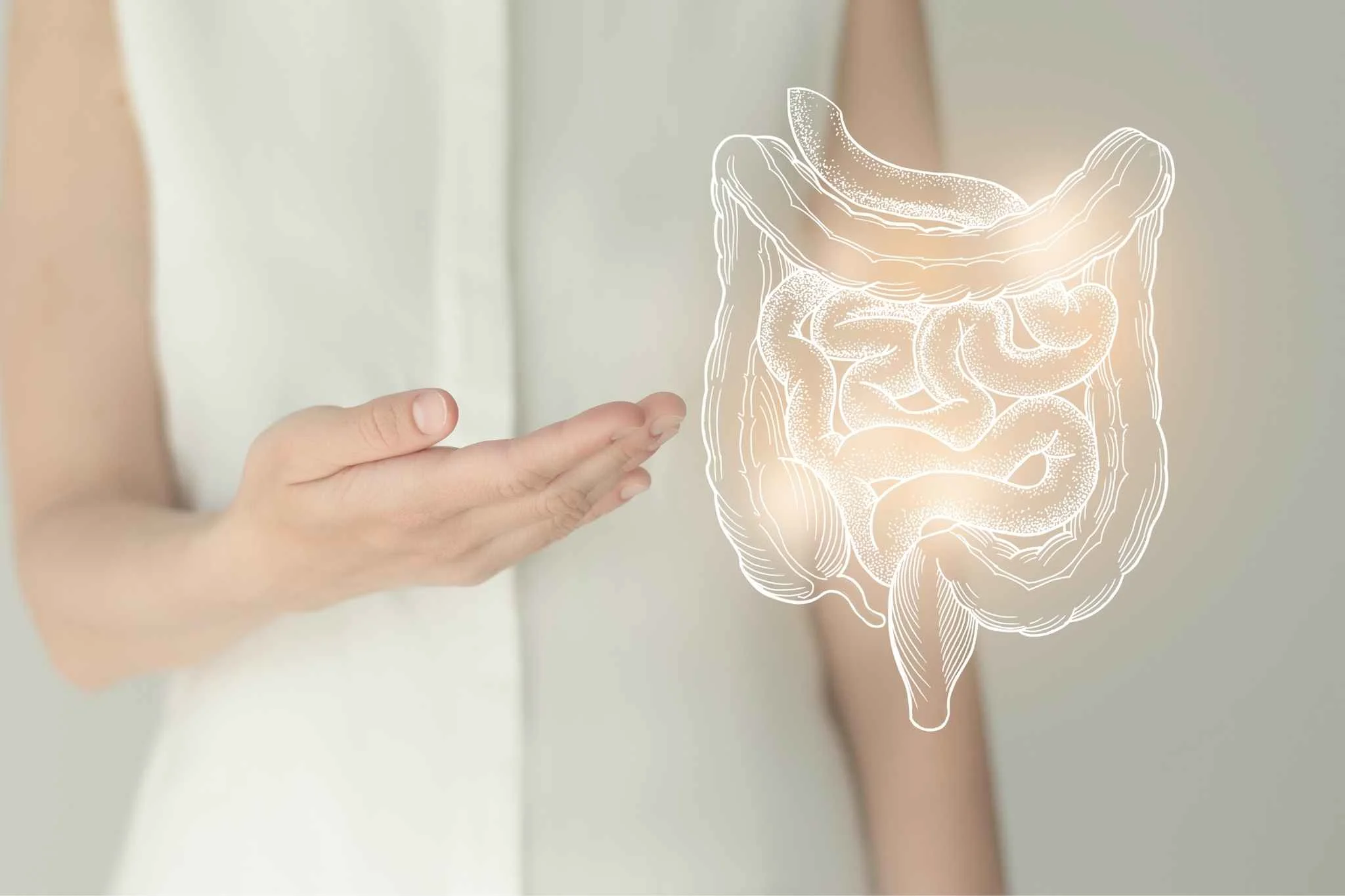Inflammatory Bowel Disease (IBD) is characterized by longterm inflammation of the tissues in the digestive tract. Here you can find all the information and resources you need to navigate, understand and manage IBD.
Basics of IBD
Extraintestinal Manifestations
IBD & Anemia IBD & Arthritis IBD & Psoriasis IBD & Fatigue IBD & Back PainNatural Treatments
More on IBD
Frequently Asked Questions
While the exact cause of IBD is unknown, there are several factors involved in its development, including diet, genetics, an imbalance in the microbiome, an overactive immune response, and lifestyle.
While there is no magic cure for IBD, many are able to manage the condition and achieve a good quality of life with medications, natural treatments, complementary and alternative medicine (CAM), and certain dietary changes.
IBD and IBS are often confused, as they share similar symptoms of cramping and diarrhea. However, the two conditions have different causes and requirements for effective treatment. IBD involves inflammation of the bowel wall and damage to the organic tissue, whereas IBS is a functional disorder likely stemming from a disruption of the brain-gut communication.
IBD can cause periods of symptoms including: diarrhea, abdominal cramps, rectal bleeding, weight loss, fever, and iron deficiency.
Diagnosing IBD generally involves an evaluation of the patients’ medical history, along with physical examination, blood tests, stool tests, examination of biopsy samples from the digestive tract, endoscopy and imaging studies such as a CT scan or MRI.
While diet can impact IBD symptoms, every patient will have specific trigger foods or nutritional requirements to take into account. As a general rule, it’s best to avoid spicy or greasy foods, high-fiber foods and dairy products as these may trigger symptoms. The best way to manage your diet is to work with a registered dietician who can tailor a diet plan to your specific needs.
Although stress is not a direct cause of IBD, periods of high stress are associated with worsened symptoms and flare-ups. Researchers recently found that stress hormones can interact with neurons and glial cells in the enteric nervous system, driving inflammation in the intestines.
The systemic nature of inflammation in IBD can have an impact on other organs and systems in the body. These are known as extra-intestinal manifestations (EIM), which can include joint pain, skin conditions, eye inflammation and liver disorders. Many EIMs resolve on their own with proper treatment and management of the underlying inflammation, however some complications will require targeted treatment.
IBD can lead to various complications, such as strictures (narrowing of the intestine), fistulas (abnormal connections between organs), abscesses, malnutrition, and an increased risk of developing osteoporosis or blood clots. Regular monitoring and treatment can help prevent or manage these complications.
Can’t find what you’re looking for? Drop us a line below:
Glossary
Aetiology
Aetiology refers to the study or explanation of the causes or origins of a disease or condition, focusing on identifying the underlying factors, such as genetic, environmental, or behavioral, that contribute to its development.
Abscess
An abscess, in the context of inflammatory bowel disease (IBD), refers to a localized collection of pus that forms within the gastrointestinal tract due to infection or inflammation, often requiring drainage or surgical intervention for treatment.
Read MoreAcid reflux
A burning sensation usually felt in the chest, caused by stomach acid flowing back up into the oesophagus.
Read MoreAminosalicylates (5-ASA)
Medications that contain 5-aminosalicylic acid and help reduce inflammation in the intestinal lining.
Read MoreAnal Fissure
A crack in the skin around the anus, which can often be painful and may cause bleeding. In Crohn’s disease, a fissure can deepen and this is referred to as an ‘anal ulcer’.
Anemia
Anemia is a medical condition characterized by a decrease in the number of red blood cells or a decrease in the amount of hemoglobin, a protein in red blood cells that carries oxygen throughout the body. Hemoglobin is responsible for binding to oxygen in the lungs and delivering it to the tissues and organs.
Read MoreAnti TNFα
Anti-TNFα refers to a class of medications that target and inhibit tumor necrosis factor-alpha (TNFα), a pro-inflammatory cytokine, to reduce inflammation and alleviate symptoms in conditions such as rheumatoid arthritis, inflammatory bowel disease, and psoriasis.
Read MoreBiologics
Medications made from antibodies of living organisms and/or grown in a laboratory that help to suppress inflammation.
Read MoreBiomarkers
Biomarkers are molecules in the body such as proteins, lipids and ncleuic acids that can be measured in laboratory tests in order to diagnose and manage a disease.
Biopsy
A biopsy is a small peice of tissue used by a pathologist to help diagnose and classify a disease.
Blockage
A partial of complete obstruction of the small or large intestine that blocks food, gas, liquid and stool from passing through the intestines in a regular way.
C-reactive protein (CRP)
A blood test that measures the level of inflammation in the body.
Colectomy
Colectomy is a surgical procedure in which a portion or the entire colon is surgically removed. It is performed to treat conditions such as colon cancer, inflammatory bowel disease, or diverticulitis that have not responded to other treatments or in cases of emergency.
Colitis
The inflammation of the colon.
Colon
The colon is the large intestine, which absorbs water from indigested food waste to form stool.
Colonoscopy
A diagnosis procedure used to examine the large intestine (colon) by inserting a long, flexible tube with a camera through the rectum.
Colostomy
A surgical procedure in which a portion of the colon is brought to the surface of the abdomen to create a stoma, allowing the diversion of stool out of the body. It is often performed to treat certain medical conditions or after the removal of a section of the colon, providing an alternative route for waste elimination.
Corticosteroids
Medications that relieve inflammation by suppressing the immune system. Corticosteroids are used as a short-term medication.
Read MoreCrohn's Colitis
Crohn’s Disease in the colon / large intestine.
Endoscopy
A term for the examination of the instestines using a tube with a camera on its tip, called an enoscope, which is inserted through the mouth or anus.
Enteral Nutrition
A method of providing nutrition directly into the gastrointestinal tract, typically through a feeding tube. It involves delivering a nutritionally balanced liquid formula that contains nutrients such as proteins, carbohydrates, fats, vitamins, and minerals. Enteral nutrition is used when a patient is unable to consume food orally or has a condition that impairs their ability to absorb nutrients from food.
Read MoreEsophagus
The esophagus is a muscular tube that connects the throat (pharynx) to the stomach. It serves as a passageway for food and liquids to travel from the mouth to the stomach through a coordinated process of swallowing and muscular contractions called peristalsis.
Extraintestinal manifestations
Extraintestinal manifestations refer to medical conditions or symptoms that occur outside of the intestine but are associated with a primary gastrointestinal disorder, such as inflammatory bowel disease. These manifestations can affect various organs or systems in the body, including the skin, joints, eyes, liver, and kidneys.
Read MoreFatigue
Fatigue is a persistent and overwhelming feeling of physical or mental tiredness and lack of energy. It is often accompanied by a sense of exhaustion, reduced motivation, and difficulty in performing daily activities. In IBD, fatigue may be a sign of iron-deficiency anema.
Read MoreFecal calprotectin
Fecal calprotectin is a protein biomarker found in stool samples that is used as a non-invasive test to assess intestinal inflammation. Elevated levels of fecal calprotectin can indicate the presence of inflammatory bowel disease (IBD) or other gastrointestinal conditions and help guide treatment decisions.
Fistula
A fistula is an abnormal connection or passageway that forms between two organs, vessels, or structures that are not meant to be connected. In the context of medicine, a fistula often refers to an abnormal passage that develops between two segments of the digestive tract, such as the intestine or rectum, or between the digestive tract and nearby organs.
Flare
In the context of Inflammatory Bowel Disease (IBD), a flare refers to a period of increased disease activity and worsening symptoms. During a flare, the inflammation in the gastrointestinal tract becomes more pronounced, causing symptoms such as abdominal pain, diarrhea, rectal bleeding, fatigue, and weight loss to intensify.
Gastrointestinal (GI) tract
The gastrointestinal (GI) tract, also known as the digestive tract, is a long, hollow tube that starts from the mouth and extends to the anus. It includes organs such as the esophagus, stomach, small intestine, and large intestine, where the process of digestion and absorption of food takes place.
Ileal pouch-anal anastomosis
Ileal pouch-anal anastomosis (IPAA), also known as J-pouch surgery, is a surgical procedure performed in individuals who have had their colon and rectum removed due to conditions such as ulcerative colitis. It involves creating a pouch from the end of the small intestine (ileum) and connecting it to the anus, allowing for the elimination of waste without the need for a permanent stoma.
Ileostomy
Ileostomy is a surgical procedure where a portion of the small intestine (ileum) is brought to the surface of the abdomen to create a stoma. This allows waste to exit the body, bypassing the colon and rectum, and is typically performed in cases where the colon and rectum are removed or temporarily bypassed due to disease or surgical necessity.
Ileum
The ileum is the final segment of the small intestine, located between the jejunum and the cecum (the first part of the large intestine). It is responsible for the absorption of nutrients, such as vitamins, minerals, and bile salts, into the bloodstream before passing the remaining waste material to the large intestine.
Immune response
The immune response is the body’s coordinated defense mechanism against foreign substances, such as pathogens or antigens. It involves the activation of immune cells, release of antibodies, and production of immune molecules to eliminate the threat and restore the body’s normal physiological state.
Immune system
The immune system is a complex network of cells, tissues, and organs that work together to defend the body against harmful pathogens, such as bacteria, viruses, and parasites. It recognizes and responds to foreign invaders, neutralizes them, and helps maintain overall health and protection against infections and diseases.
Immunomodulators
Immunomodulators are medications that regulate or modify the immune response in the body. They are used to treat various immune-related conditions, such as autoimmune diseases or inflammatory disorders, by either suppressing or enhancing immune activity to achieve a therapeutic effect.
Read MoreIndeterminate colitis
Indeterminate colitis is a term used when a diagnosis cannot definitively distinguish between ulcerative colitis and Crohn’s disease based on clinical, endoscopic, and histological findings. It represents a category of inflammatory bowel disease where the characteristics do not clearly align with either condition, requiring further monitoring and evaluation for accurate classification.
Inflammation
Inflammation is the body’s natural immune response to injury, infection, or irritation. It involves localized redness, swelling, heat, and pain as immune cells and chemicals work to eliminate the cause of injury or infection and promote healing. In the context of Inflammatory Bowel Disease (IBD), inflammation refers to chronic and recurring inflammation of the digestive tract, characterized by symptoms such as abdominal pain, diarrhea, rectal bleeding, and mucosal damage, caused by an overactive immune response.
Intravenous (IV)
Intravenous (IV) refers to the administration of medications, fluids, or nutrients directly into a vein using a needle or catheter. This route allows for rapid and direct delivery into the bloodstream, ensuring quick absorption and distribution throughout the body.
Left-Sided Colitis
Left-sided colitis affects the rectum, sigmoid, and descending areas of the colon. This condition is also known as distal colitis. Complications can include anemia, fulminant colitis, perforation, and toxic megacolon.
Read MoreLymphocytic Colitis
Lymphocytic colitis is a form of microscopic colitis characterized by chronic inflammation in the colon, specifically the lining of the colon. It is characterized by increased numbers of lymphocytes, a type of white blood cell, in the colon tissue, leading to symptoms such as chronic watery diarrhea.
Magnetic resonance imaging (MRI)
Magnetic resonance imaging (MRI) is a medical imaging technique that uses a powerful magnetic field and radio waves to generate detailed images of the body’s internal structures. It provides valuable diagnostic information without exposing the patient to ionizing radiation, allowing visualization of soft tissues, organs, and abnormalities with high clarity.
Malabsorption
Malabsorption refers to a condition in which the body has difficulty absorbing or properly utilizing nutrients from the digestive tract. It can result in deficiencies of vitamins, minerals, and other essential nutrients, leading to symptoms such as diarrhea, weight loss, and nutrient deficiencies.
Microbiome
The microbiome refers to the collective community of microorganisms, including bacteria, fungi, viruses, and other microbes, that inhabit various parts of the body, particularly the gut. It plays a crucial role in digestion, nutrient absorption, immune function, and overall health.
Microscopic Colitis
Microscopic colitis is a distinct disease that is different from the various sub-types of ulcerative colitis described above. Microscopic colitis is characterized by inflammation in the colon or large intestine that is too small to see with the naked eye, i.e it cannot be seen during an endoscopy even by a skillful GI doctor, and only by biopsies and microscopic examination can the inflammation be detected.
It includes two subtypes: collagenous and lymphocytic colitis, although both have similar symptoms and treatments. Although microscopic colitis can impact people of any age, it is more commonly diagnosed in females, and in those 60 or older.
Read MoreMucosa
In the context of Inflammatory Bowel Disease (IBD), the mucosa refers to the innermost layer of the intestinal lining that is affected by chronic inflammation. It is composed of specialized cells and glands involved in nutrient absorption and immune responses, and its inflammation can lead to the characteristic symptoms of IBD.
Mucosal healing
Mucosal healing refers to the resolution and restoration of the damaged intestinal mucosa in conditions like Inflammatory Bowel Disease (IBD), where the inflammation and ulceration of the mucosal lining are reduced or eliminated. It is an important treatment goal as it correlates with improved symptoms, decreased disease activity, and a lower risk of disease relapse.
Mucosal lining
The mucosal lining refers to the innermost layer of a body cavity or organ that is covered by a mucous membrane. It serves to protect the underlying tissues, secrete mucus, and participate in various physiological functions, such as nutrient absorption and immune responses.
Pancolitis
Pancolitis, also known as extensive colitis, is the term describing a disease that starts in the rectum and extends beyond the left side of the colon to the transverse colon (affecting two-thirds of the colon) or further to the right colon (affecting the entire large intestine). This condition often results from UC but occasionally can arise from infections that need to be ruled out.
Read MorePerforation
In the context of Inflammatory Bowel Disease (IBD), perforation refers to a severe complication where there is a rupture or hole that develops in the wall of the intestine, leading to the release of intestinal contents into the abdominal cavity. It is a medical emergency that requires immediate surgical intervention to prevent further complications and sepsis.
Perianal
Perianal refers to the area surrounding the anus, including the skin and tissues in the immediate vicinity. It is a region prone to various conditions such as infections, fistulas, abscesses, and skin abnormalities, often associated with conditions like inflammatory bowel disease (IBD).
Pouchitis
Pouchitis is an inflammation of the ileal pouch, a surgically created reservoir made from the small intestine in individuals who have undergone ileal pouch-anal anastomosis (IPAA) surgery. It is characterized by symptoms such as increased stool frequency, abdominal pain, and rectal bleeding, and is often associated with underlying conditions like ulcerative colitis.
ReProctitis
Proctitis is inflammation of the rectal lining, specifically the mucosa, resulting in symptoms such as rectal pain, rectal bleeding, and increased frequency of bowel movements. It can be caused by various factors, including infections, inflammatory bowel disease (IBD), or radiation therapy.
Read MoreProctocolectomy
Proctocolectomy is a surgical procedure involving the removal of both the colon and rectum. It is commonly performed to treat conditions such as ulcerative colitis or familial adenomatous polyposis (FAP) and may involve the creation of an ileal pouch-anal anastomosis (IPAA) or permanent ileostomy for waste elimination.
Proctosigmoiditis
Proctosigmoiditis causes inflammation that extends further inwards than proctitis but less than left-sided colitis and affects both the sigmoid colon and rectum.
As such, patients may not experience as many systemic symptoms as those with more extensive UC.
Read MoreRectum
The rectum is the final portion of the large intestine located between the sigmoid colon and the anus, serving as a temporary storage site for stool before elimination. It is lined with muscles that aid in the expulsion of feces during bowel movements.
Remission
In the context of Inflammatory Bowel Disease (IBD), remission refers to a period during which the disease activity is significantly reduced or absent. It is characterized by the absence or minimal symptoms, normal or near-normal inflammatory markers, and the absence of active inflammation observed during endoscopy or imaging studies.
Small intestine
The small intestine is the part of the digestive tract that follows the stomach and precedes the large intestine. It is responsible for the majority of nutrient digestion and absorption, consisting of three sections: the duodenum, jejunum, and ileum.
Stoma
A stoma is a surgically created opening on the surface of the abdomen that allows for the diversion of bodily waste. It can be formed from a portion of the small intestine (ileostomy) or the large intestine (colostomy) and is used when normal routes of elimination, such as the rectum, are not functional or need to be bypassed.
Stricture
A stricture is a narrowing or constriction of a hollow organ or passageway, such as the intestines. In the context of inflammatory bowel disease (IBD), strictures can develop due to chronic inflammation, scar tissue formation, or other causes, leading to symptoms such as bowel obstruction and abdominal pain.
Terminal ileum
The terminal ileum is the last segment of the small intestine that connects to the beginning of the large intestine (cecum). It plays a crucial role in the absorption of nutrients and the passage of waste material into the colon for further processing and elimination.
Upper endoscopy
Upper endoscopy, also known as esophagogastroduodenoscopy (EGD), is a procedure in which a flexible tube with a camera is inserted through the mouth to examine the esophagus, stomach, and duodenum. It is used to diagnose and evaluate conditions such as ulcers, inflammation, tumors, and other abnormalities in the upper gastrointestinal tract.
Ulcerative proctitis is a subtype of UC in which inflammation is confined to the rectal area.
Various factors, including sexually transmitted infections, severe constipation with a solitary rectal ulcer, and radiation therapy, can similarly cause inflammation in the rectum and mimic this condition. Complications of ulcerative proctitis may include anemia from loss of blood, ulcers, anal fissures, and rarely fistulas. Still, unlike other UC subtypes, ulcerative proctitis rarely leads to systemic symptoms.
Read MoreExplore the Studies
Get Your Tailored Protocol
 1
1
Take our quick online assessment
All information is completely confidential
 2
2
Review your Personalized Treatment Plan
An evidence-based plan based on your individual needs
 3
3
Receive your package
Everything you need, at your door










